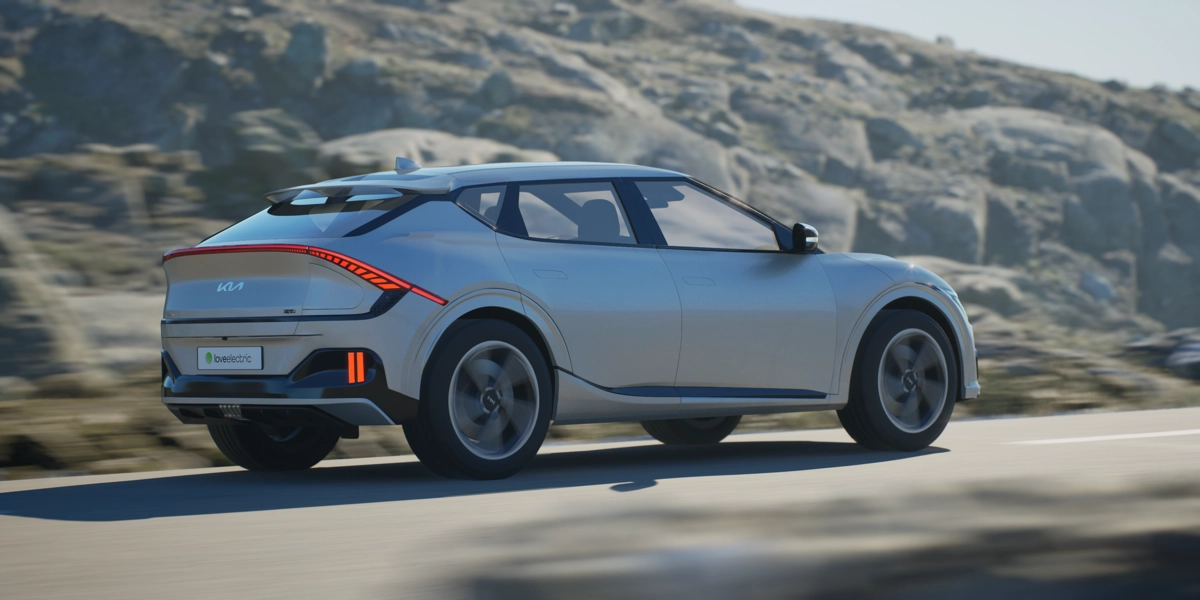7 Factors That Affect EV Range
.avif)
As the UK’s charging infrastructure continues to grow exponentially - with over 61,000 public chargers as of May 2024 - the conversations around electric vehicle range are shifting.
While it's true that, just like their petrol and diesel counterparts, electric vehicles may not always match their advertised range in day-to-day conditions, the great news is that there is plenty you can do to maximise your EV’s range.
You’re not alone if you’ve wondered about how far your electric vehicle can really go. We’re here to clear up the myths and focus on the facts – and put the power back in your hands. By understanding the ins and outs of EV range, you’ll be set to boost your car’s performance and make the most of every charge.
Let’s take a look at the top factors that can influence the range of your EV, so you can hit the road worry-free.
1. Driving Style
Aggressive driving, such as rapid acceleration and frequent hard braking, can drain your electric vehicle's battery much faster than smooth and steady driving. To extend your EV's range, consider adopting gentler driving practices.
Utilising regenerative braking is the smart choice — it converts the energy used in braking back into power for your battery. Additionally, driving in eco-mode can help manage the vehicle’s energy use more efficiently. Both strategies not only improve your range but also contribute to a smoother and more economical driving experience.
2. Climate Conditions
Extreme temperatures can significantly affect your electric vehicle’s battery efficiency and range. Cold weather can reduce battery capacity, while very hot conditions may cause it to work harder, both decreasing overall range.
A helpful tip to counteract this is to precondition your vehicle while it's still charging. This method uses external power to optimise the battery’s temperature before you drive off, ensuring peak performance and full charge utilisation regardless of the weather.
Some vehicles may also let you set the temperature before you get in, allowing you to cool the car inside before setting off.
Alternatively, if it’s cold, try using your heated seats and steering wheel to warm up. This is a much more energy efficient way to stay toasty than heating up the entire cabin.
3. Vehicle weight and in-car amenities
Carrying extra unnecessary weight or frequent use of in-car accessories like air conditioning can also reduce your electric vehicle’s range.
Excess weight demands more energy from the battery, so try to lighten the load by removing unnecessary items from the boot and cabin.
As mentioned in our previous point, utilising accessories sparingly can really help with getting the most from your car. Pay special attention to heating and cooling systems, as these are the main energy consumers within a car.
Smart management of these factors ensures your battery delivers its best performance on every trip.
.jpg)
Photo by Emerson Peters on Unsplash
4. Battery Age and Health
As with most pieces of technology - or indeed humans - age does tend to diminish efficiency and overall health. Subsequently, range is affected.
As batteries age, their capacity to hold a charge diminishes, which can reduce the distance you are able to travel on a single charge.
To help maintain your battery’s health over time, it’s crucial to follow best practices. Avoid regularly letting the battery’s charge drop too low, as this can accelerate degradation. Keep the battery charged within the optimal range – that’s between 20% and 80% – to prolong its life and ensure that your EV remains reliable and efficient on the road.
5. Terrain and Route
Your route can also impact your electric vehicle’s battery consumption. Exceptionally hilly routes or heavy start/stop traffic can result in higher energy use, reducing overall range.
To optimise your journey, utilise GPS and route planning tools specifically designed for EVs.
These tools help you find the most energy-efficient routes, avoiding areas that might deplete your battery more quickly. By planning ahead, you can ensure a smoother ride, avoid traffic and maximise your vehicle’s range. Making every trip calm, smooth and efficient.
6. Tyre Pressure and Condition
Maintaining the correct tire pressure is crucial for reducing rolling resistance and improving your electric vehicle's mileage.
Under-inflated tires can increase resistance, forcing your EV to expend more energy, in turn diminishing the battery range.
Regularly checking and adjusting your tires to meet the manufacturer’s recommended levels ensures optimal efficiency. This simple yet effective maintenance step can significantly enhance your driving experience by maximising range and improving vehicle handling.
7. Charging Habits
It may sound odd, but your charging habits play a critical role in maximising your car’s efficiency and extending its battery life.
How often you charge, and which method of charging you use, can impact how well the battery performs over time.
To get the most out of your EV, try to charge slowly during off-peak hours when electricity demand is lower — this can also be more cost-effective. If possible, avoid letting the battery's charge level get too low before recharging it. The battery is at its happiest between 20 and 80%, so wherever possible, try to keep the charge between those figures.
With a smart charger at home, battery management is a doddle. It allows you to charge when electricity is at its cheapest and greenest. You can set a bespoke charging schedule. With some vehicles, you can even sell your energy back to the grid.
All in all…
An electric car is a fantastic and enjoyable way to reduce your carbon footprint. Quiet, quick and cutting-edge - there’s a lot to love about going electric.
With only a small amount of knowledge and preparation, you can maximise your car’s range and enjoy driving without compromise.


.jpg)
.jpg)

